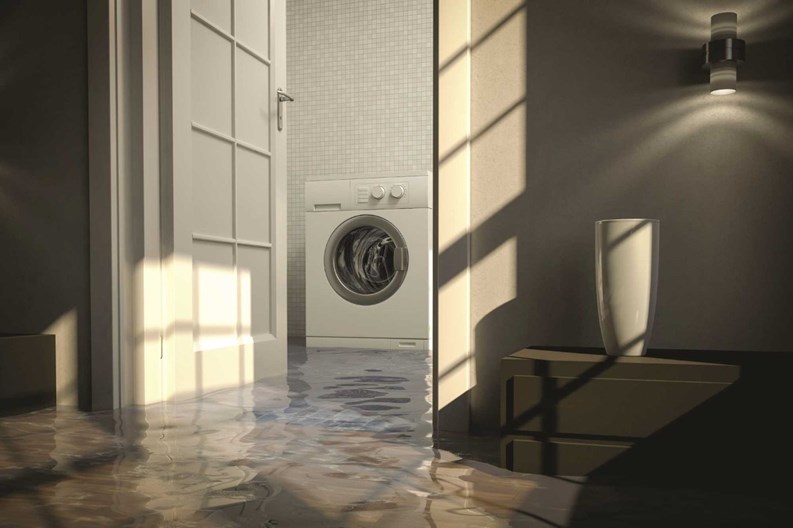Flood” might as well be synonymous with “dread.” Or “mess.” Or “insurance hassle.”
Think back to the devastating footage after Hurricane Sandy, and you may have a number of questions about flood zones and flood insurance. Knowing the ins-and-outs of flood insurance before an incident happens, though, can help you navigate those stormy waters should calamity come to your doorstep.
First things first: What constitutes a flood? The Federal Emergency Management Agency (FEMA) defines it as the following:
• A general and temporary condition of partial or complete inundation of two or more acres of normally dry land area or of two or more properties (at least one of which is the policyholder's property) from:
• Overflow of inland or tidal waters; or
• Unusual and rapid accumulation or runoff of surface waters from any source; or
• Mudflow; or
• Collapse or subsidence of land along the shore of a lake or similar body of water as a result of erosion or undermining caused by waves or currents of water exceeding anticipated cyclical levels that result in a flood as defined above.
So, for example, as John Gilligan, vice president of Massachusetts-based Rogers & Gray Insurance Agency points out, seepage from melting snow or a hurricane-damaged, leaky roof would not be not considered flood, because it doesn’t meet the “sudden rising water” criteria. Rogers & Gray colleague Ryan O’ Connell adds that a burst pipe wouldn’t either—that’s covered under homeowners insurance.
That definition, in turn, defines flood insurance and what it does and does not cover. You can get insurance to cover the dwelling, contents, or both. What often surprises people, notes Gilligan, is the distinction relative to the basement. There, insurance “will only cover utilities and structural.”
In addition to the insured building and its foundation, building coverage includes electrical and plumbing systems; central air conditioning equipment, furnaces; and water heaters; kitchen appliances; window blinds; installed carpeting over unfinished flooring; and installed paneling, wallboard, bookcases, and cabinets. Flood insurance for dwellings also includes detached garages (up to 10% percent of building property coverage), but non-garage detached buildings require a separate policy. Debris removal, too, is covered by insurance.
Personal belongings, such as clothing, furniture, and electronic equipment are covered under contents coverage, along with curtains, air conditioners, portable microwave ovens and dishwashers, washers, and dryers. Also included: carpeting not included in building coverage, food freezers (and the food inside them), and up to $2,500 of valuable items such as original artwork and furs.
People might also be surprised to know what flood insurance doesn’t cover in terms of property as well as intangible assets: currency, precious metals, and valuable papers such as stock certificates; items that are outdoors such as trees, plants, wells, septic systems, walks, decks, patios, fences, seawalls, hot tubs, and swimming pools; living expenses (e.g., temporary housing), and financial losses caused by business interruption or loss of use of insured property. Lastly, automobiles and their parts are not included in flood insurance coverage.
Do You Need It?
It’s essential, of course, to know if you’re in a flood zone.
Gilligan says that insurance agents or the bank holding the mortgage can determine the zone. You can also get the actual Flood Insurance Rate Map (FIRM) from the FEMA site in a very convenient way: a “FIRMette,” a printable, full-scale section of a FEMA Flood Insurance Rate Map (FIRM) that you create yourself online for free.
Zones A and V are high-hazard flood zones. Per the National Flood Insurance Program (NFIP), which is part of FEMA, high-risk flood areas with mortgages from federally-regulated or insured lenders are required to have flood insurance. A residential building in a high-risk flood zone is six times more likely to be damaged by flood than fire. That being said, all 50 states have experienced floods or flash floods in the past five years, and nearly 25% of all NFIP claims come from those living outside of mapped high-risk flood areas—and those claims amount to about one-third of Federal Disaster Assistance for flooding.
“As for an association not in a high-risk area,” says Gilligan, “it comes back to their risk tolerance as an association.” Chris Snow of Bernier & Snow Insurance Agency adds that even though flood insurance is not federally required for moderate-to-low risk flood areas, it’s still strongly recommended because when all is said and done, “anyone can be financially vulnerable to floods.” Snow cites a noteworthy stat, which is that from 2003 to 2012, total flood insurance claims averaged about $4 billion per year.
An important question for condo owners is whether the association alone needs to carry or if individual unit owners also need it. The answer: Sometimes. Snow says that if the association has coverage, it will only cover the building, so condo owners would want to have contents coverage to supplement it. “It should be noted that most homeowners insurance does not cover flood damage and must be purchased separately,” Gilligan says, adding that even in high-risk areas, “standalone units are less likely to be covered by the associations.” He adds that if unit owners are looking to obtain a mortgage, they may be required to cover the building themselves. The association’s coverage might also not be enough even for the building; Gilligan offers a recent example in which “a customer buying a unit had to buy an additional portion of dwelling coverage to make up for the difference.”
But the key issue facing associations and homeowners today is the cost of the insurance. Under NFIP guidelines, the Residential Condominium Building Association Policy (RCBAP)—a special flood policy written to cover condominium buildings—has maximum limits of up to $250,000 per unit. “The RCBAP says that if you have a condominium, the flood insurance policy must be for 80 percent replacement cost of the building, or $250,000 per unit, whichever is less,” explains Bernie Gitlin, vice president of Risk Strategies Company, based in Randolph, Massachusetts. “What that has done is to create enormous premiums for even a mid-rise condominium building. It can be extremely expensive in A and V flood zones.”
For example, Gitlin says, a waterfront association he dealt with used to have $250,000 in flood insurance for the building, but with the NFIP now requiring policies to cover 80 percent of the building or $250,000 per unit, the coverage rose to $15 million, “and the premiums cost them something like $100,000.”
And, he notes, the insurance isn’t really optional. “The condos are having a big problem, in that banks are requiring it.” Adding insult to injury, Gitlin says, a recent re-mapping of flood zones put many buildings that formerly were not in flood zones into them.
Premiums for condo units are calculated using a number of aspects beyond flood zone, deductible, and the amount of building and contents coverage. The year the building was constructed, number of floors, number of units and the location of contents are all factors. And, in newer buildings, the location of the lowest floor in relation to the elevation requirement on the flood map is considered.
Is Your Map Current?
Flood insurance maps are in the process of being redrawn—a process that was set in motion years before the devastation of Hurricane Sandy. Gilligan explains that in 2003, the federal government decided that maps were aging, and an effort was undertaken to remap the entire country. It took a while for the remapping to take place in New England; Snow confirms that New Hampshire has been remapped only recently, and O’Connell adds that the Barnstable County map changes are slated for July 2014.
“In New England, the remapping has coincided with some of the other legislative events,” says Gilligan, namely the Biggert-Waters Flood Insurance Reform Act of 2012 and the Homeowner Flood Insurance Affordability Act of 2014. “All three taking place at the same time has created a stir.”
Biggert-Waters called on NFIP to raise rates to reflect true flood risk and to change how FIRM updates impact policyholders. Many homeowners, particularly in coastal areas, saw huge rate hikes in the aftermath of Biggert-Waters, which caused public outcry. The follow up Homeowner Flood Insurance Affordability Act repeals and modifies certain provisions of Biggert-Waters.
Of all the regions of the country, New England was affected most by Biggert-Waters. “Because of the age of many of the buildings, the act removed the ability of owners to purchase pre-FIRM policies,” says Gilligan. “That provision was reinstated as part of Homeowner Affordability Act on March 1, so we can now repurchase and reassign pre-FIRM policies again.”
Condo associations can, if they wish, contest their placement in the new flood zone maps. The process, through FEMA, involves filing for a letter of map amendment. Snow notes that some lenders reserve the right to require flood insurance “regardless of flood zone.”
As always when it comes to insurance, it’s necessary to weigh the factors: the cost of association’s carrying flood insurance versus the risk or potential cost of not carrying it. Indeed, according to Snow, “With the cost of flood insurance skyrocketing in the wake of the Biggert-Waters, many associations are reconsidering the purchase of flood insurance.” Of course, the issue to consider is the fiduciary duty the board has to the unit owners. “Most Directors & Officers professional liability policies have an exclusion for ‘failure to purchase insurance’,” says Snow. “It's a very slippery slope indeed—and a decision that needs to be taken very seriously.”
Whatever flood insurance battles exist don’t involve the insurance companies directly. “It’s actually the government,” says O’Connell. “Insurance companies and agencies are just administrators, if you will, on the National Flood Insurance Program.”
That being said, as Gilligan indicates, bulletins from FEMA regarding the Homeowner Affordability Act are still pending. “As those come out, it will show us the direction of NFIP going forward. Depending on changes made relative to grandfathering or other subsidy changes, there may certainly be further pushback.”
Snow echoes the point relative to legislation—and the fact that the NFIP is about $24 billion in debt to the U.S. Treasury. “This is an ongoing battle and it’s not over just yet.”
Jodie Boduch is a freelance writer and a frequent contributor to New England Condominium.







Leave a Comment